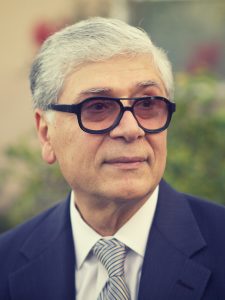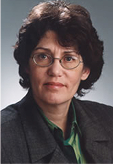The following papers by Dr. Forouhi and Dr. Bloomer represent the core technology of n&k Technology Inc.


Optical Dispersion Equations for Metals Applicable to the Far-IR Through EUV Spectral Range
Source: Journal of Physics Communications, Volume 5, Number 2 (2021)
Authors: A.R. Forouhi, I. Bloomer
Abstract: The long-standing problem of finding a general formulation of optical dispersion for metals, valid over a wide spectral range of photon energy E is tackled. To this end, equations for refractive index n and extinction coefficient k as functions of E are developed. Functions n(E) and k(E) respectively represent real and imaginary parts of complex index of refraction N(E). Previous formulations, most of which are based on various combinations of Drude and Lorentz models, are either usable only over a limited spectral range or do not accurately fit experimental data. The formulation overcomes these shortcomings by exploiting concepts set forth by Forouhi and Bloomer in 1986, 1988 and 2019 publications pertaining to optical dispersion of semiconductors and insulators. These concepts are centered on time-dependent perturbation theory and consistency with principle of causality. The new expression for k(E) is based on three types of events initiated by photon-electron interactions in metals: intraband electron dipole transitions; interband electron dipole transitions; inelastic collisions of electrons. Expression for n(E) is obtained as Hilbert transform of k(E). It is demonstrated that the new dispersion equations satisfy Titchmarsh’s Theorem, a mathematical theorem that conveys the principle of causality, which in turn establishes the theoretical validity of the formulation. Equations for n(E) and k(E) are fitted to published experimental data of metals encompassing all metal groups of the periodic table. Reported data span various ranges of energy, from far-infrared to extreme-ultraviolet. Excellent fits between calculated and experimental spectra are achieved. Having established consistency with Titchmarsh’s Theorem and by extension, causality, plus agreement with experimental findings suggests this formulation represents a valid description of optical dispersion of metals.
New Dispersion Equations for Insulators and Semiconductors Valid Throughout Radio-Waves to Extreme Ultraviolet Spectral Range
Source: Journal of Physics Communications, Volume 3, Number 3 (2019)
Authors: A.R. Forouhi, I. Bloomer
Abstract: A new formulation of optical dispersion in terms of complex index of refraction, N(E) as a function of photon energy, E, applicable to insulators and semiconductors, is introduced. Previous formulations, developed over the past 200 years, are either valid only over a limited spectral range, or do not accurately fit experimental data, or do not conform to the Principle of Causality. The new formulation overcomes these shortcomings. Its validity is established based on theoretical and experimental considerations. The theoretical basis stems from consistency with Titchmarsh’s Theorem, a comprehensive mathematical expression of the Principle of Causality. In accordance with Titchmarsh’s Theorem, the expressions for the real and imaginary parts of N(E), the refractive index, n(E), and extinction coefficient, k(E), are shown to be skew reciprocal Hilbert Transforms. Also, the expression for the inverse Fourier Transform of N(E) is shown to be a complex-valued causal function of time. The causal function is identified as the polarization of the medium, P(t), if photons reach the medium at an initial time equal to zero. P(t) is associated with photon excitations of electrons and other quantum constituents of the media. The experimental basis of the formulation stems from demonstrating exceptionally close agreement with published experimental n(E) and k(E) data of different forms of insulators and semiconductors. Specifically, the formulation is applied to data of Water, Ice, SiO2-Glass, LiF, Polyethylene, a-Si, InSb, GaP, and As2Se3. Data for Water span thirteen orders of magnitude, and fourteen for Ice, over the spectral range of Radio-Waves to EUV. Data of the other materials involved smaller spectral ranges. Results indicate that fewer fitting parameters are needed over any segment of the electromagnetic spectrum, compared to other formulations. These theoretical and experimental findings suggest the formulation represents a universal description of optical dispersion of insulators and semiconductors.
Optical Properties of Crystalline Semiconductors and Dielectrics
Source: Physical Review B, Vol. 38, Np. 3, 1865 (1988)
Authors: A.R. Forouhi, I. Bloomer
Abstract: Second paper which introduces the Forouhi-Bloomer Dispersion Equations. Shows that there is excellent agreement with the FB Model and the characterization for crystalline Si, Ge, GaP, GaAs, GaSb, InP, InAs, InSb, SiC, cubic C, and a-SiO2, over a wide range of energies.
Optical Dispersion Relations for Amorphous Semiconductors and Amorphous Dielectrics
Source: Physical Review B, Vol. 34, No. 10, 7018 (1986)
Authors: A.R. Forouhi, I. Bloomer
Abstract: Original paper which introduces the Forouhi-Bloomer Dispersion Equations and the excellent agreement with experimentally measured results of n and k for amorphous silicon, hydrogenated amorphous silicon, amorphous silicon nitride and titanium dioxide.

